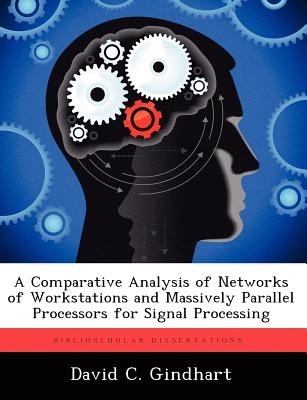
- We will send in 10–14 business days.
- Author: David C Gindhart
- Publisher: BiblioScholar
- ISBN-10: 1249593158
- ISBN-13: 9781249593157
- Format: 18.9 x 24.6 x 0.8 cm, minkšti viršeliai
- Language: English
- SAVE -10% with code: EXTRA
A Comparative Analysis of Networks of Workstations and Massively Parallel Processors for Signal Processing (e-book) (used book) | bookbook.eu
Reviews
Description
The traditional approach to parallel processing has been to use Massively Parallel Processors (MPPs). An alternative design is commercial-off-the-shelf (COTS) workstations connected to high-speed networks. These networks of workstations (NOWs) typically have faster processors, heterogeneous environments, and most importantly, offer a lower per node cost. This thesis compares the performance of MPPs and NOWs for the two-dimensional fast Fourier transform (2-D FFT). Three original, high-performance, portable 2-D FFTs have been implemented: the vector-radix, row-column and pipeline. The performance of these algorithms was measured on the Intel Paragon, IBM SP2 and the AFIT NOW, which consists of 6 Sun Ultra workstations connected via the Myrinet switch. Three important conclusions have been made. First, the pipeline was the best algorithm on all platforms by approximately 30%. Second, the NOW was nearly equal to the SP2 in runtime, while the Paragon did not outperform a single Ultra workstation. As a result, NOWs are a competitive platform for this application. Finally, only limited speedup was achieved on the SP2 (2.9) with 32 processors, and AFIT NOW (1.9) with 5 processors. It appears that the changing platform communication-to-computation ratio has made the 2-D FFT a less viable candidate for parallelization, given its high communication overhead.
EXTRA 10 % discount with code: EXTRA
The promotion ends in 21d.02:43:48
The discount code is valid when purchasing from 10 €. Discounts do not stack.
- Author: David C Gindhart
- Publisher: BiblioScholar
- ISBN-10: 1249593158
- ISBN-13: 9781249593157
- Format: 18.9 x 24.6 x 0.8 cm, minkšti viršeliai
- Language: English English
The traditional approach to parallel processing has been to use Massively Parallel Processors (MPPs). An alternative design is commercial-off-the-shelf (COTS) workstations connected to high-speed networks. These networks of workstations (NOWs) typically have faster processors, heterogeneous environments, and most importantly, offer a lower per node cost. This thesis compares the performance of MPPs and NOWs for the two-dimensional fast Fourier transform (2-D FFT). Three original, high-performance, portable 2-D FFTs have been implemented: the vector-radix, row-column and pipeline. The performance of these algorithms was measured on the Intel Paragon, IBM SP2 and the AFIT NOW, which consists of 6 Sun Ultra workstations connected via the Myrinet switch. Three important conclusions have been made. First, the pipeline was the best algorithm on all platforms by approximately 30%. Second, the NOW was nearly equal to the SP2 in runtime, while the Paragon did not outperform a single Ultra workstation. As a result, NOWs are a competitive platform for this application. Finally, only limited speedup was achieved on the SP2 (2.9) with 32 processors, and AFIT NOW (1.9) with 5 processors. It appears that the changing platform communication-to-computation ratio has made the 2-D FFT a less viable candidate for parallelization, given its high communication overhead.


Reviews